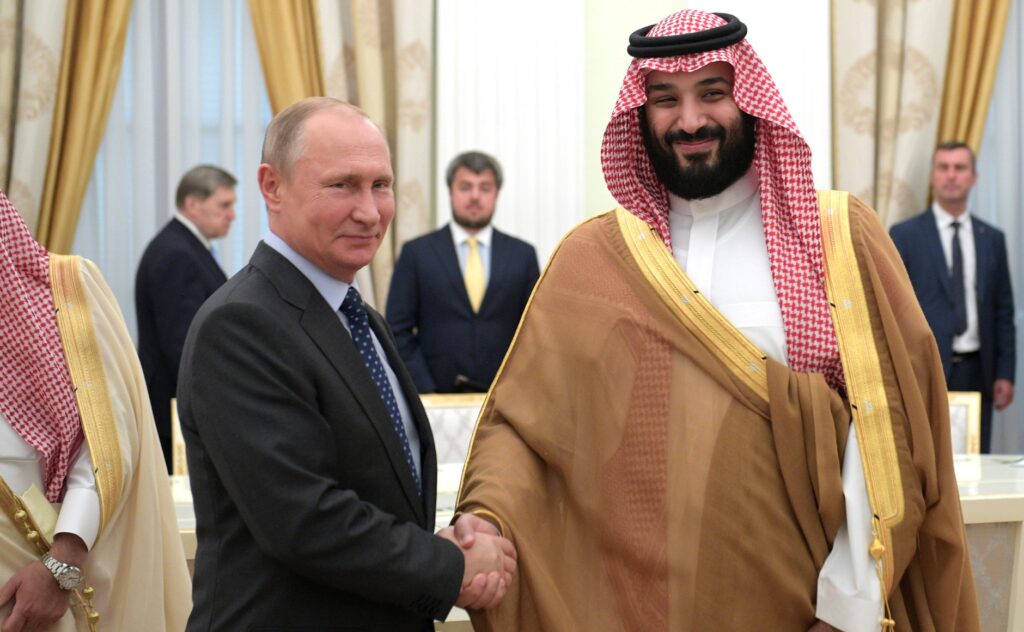
English: Vladimir Putin met with Crown Prince and Defence Minister of Saudi Arabia Mohammad bin Salman Al Saud. June 14, 2018. Photo courtesy of the office of the President of Russia.
Russia could become the largest oil producer among the OPEC+ cartel of oil exporters, overtaking the Saudis as they cut production to boost the price. Will Horner reports for The Wall Street Journal:
Saudi Arabia is set to fall below Russia and lose its spot as the largest oil producer in the OPEC+ alliance as its production cuts begin to bite, tightening the oil market just as prices appear to be turning higher, the International Energy Agency said.
The Gulf kingdom, the de facto leader of the Organization of the Petroleum Exporting Countries, has in recent months slashed its oil output, sacrificing its market share within the oil producers’ group in an attempt to buoy low oil prices that have crimped its revenue.
The cuts, which have largely not included other members of the oil cartel or its allies in a wider group known as OPEC+, have so far been undermined by stronger output from non-OPEC+ producers such as the U.S.
But those rival supply increases look set to come to an end, just as a unilateral production cut by the Saudis is set to begin this month while Russian output also appears to be declining, though at a slower pace, the IEA said in its monthly market report.
The 1-million-barrel-a-day cut, which Riyadh said last week that it would extend into August too, will see the major oil producer’s output slip to a two-year low of nine million barrels a day, and make it the second-largest producer in the OPEC+ alliance, below Russia for the first time since early 2022.
Barring the artificially low production levels during the Covid-19 pandemic, the cuts will see Saudi production slip to its lowest level since 2011.
In bearing the brunt of the supply cuts, Saudi Arabia and its Energy Minister Abdulaziz bin Salman have gone all in on a risky strategy to support the kingdom’s oil revenue at the expense of its share of the market. Analysts estimate Riyadh needs oil prices of around $80 a barrel to balance its state budget and fund lavish infrastructure projects.
Russia too has pledged to cut its oil output but has been slow to implement the measures. That appears to be changing, the IEA said, with the nation’s oil exports slumping by 600,000 barrels a day in June to 7.3 million barrels a day, its lowest level since March 2021. However, Russia could be keeping its production levels steady to satisfy domestic consumers while reducing its exports, the IEA said.
The Saudis’ unilateral move came after cuts undertaken in concert with the wider OPEC+ group largely failed to have any impact on declining oil prices. The group agreed in April to slash output by around 1.6 million barrels a day, adding to a 2-million-barrel-a-day cut in October 2022.
Read more here.
